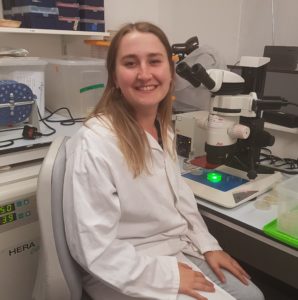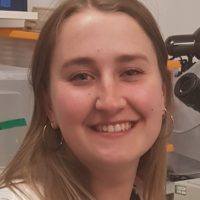My project
Background
Despite the increasing importance of amyloid diseases including Parkinson’s and Alzheimer’s in our ageing population, we lack fundamental knowledge about how and why protein aggregation causes disease. Such knowledge is needed to develop successful therapeutic strategies against these age-related diseases.
Objectives
In this project we will focus on a newly identified variant of beta2-microglobulin (beta2m) that causes fatal systemic amyloidosis. We will determine how and why this mutant aggregates; generate and characterize a C.elegans beta2m-disease model and screen for small molecules able to prevent its aggregation. We will then determine the mechanism of action of the small molecules in preventing aggregation in vitro and test their efficacy in a living organism exploiting C.elegans as a powerful model system.
Novelty
In recent work we have devised a novel and powerful screen in E.coli to identify small molecules that prevent protein aggregation. We will use this for a recently identified amyloid disease using a library of repurposed small molecules provided by our collaborator Richard Foster (School of Chemistry), and screen their efficacy and potential to enhance proteostasis in an intact living animal.
Timeliness
Combined with the exploitation of C.elegans as a screen for efficacy of small molecule hits in a living organism, the project will not only provide excellent training for a PhD student but it will also result in new knowledge of both fundamental and translational importance.
Experimental approach
The project combines biochemistry, protein chemistry, structural biology and biophysics with in vivo analyses and high-throughput screening methodologies using C.elegans. All methods and approaches needed are already well established in the applicants’ laboratories. Hence the student will obtain excellent training in a wide variety of methods and will apply them to an exciting multidisciplinary project that is achievable within the 4 year tenure of this PhD.
Connect
Not yet available.

